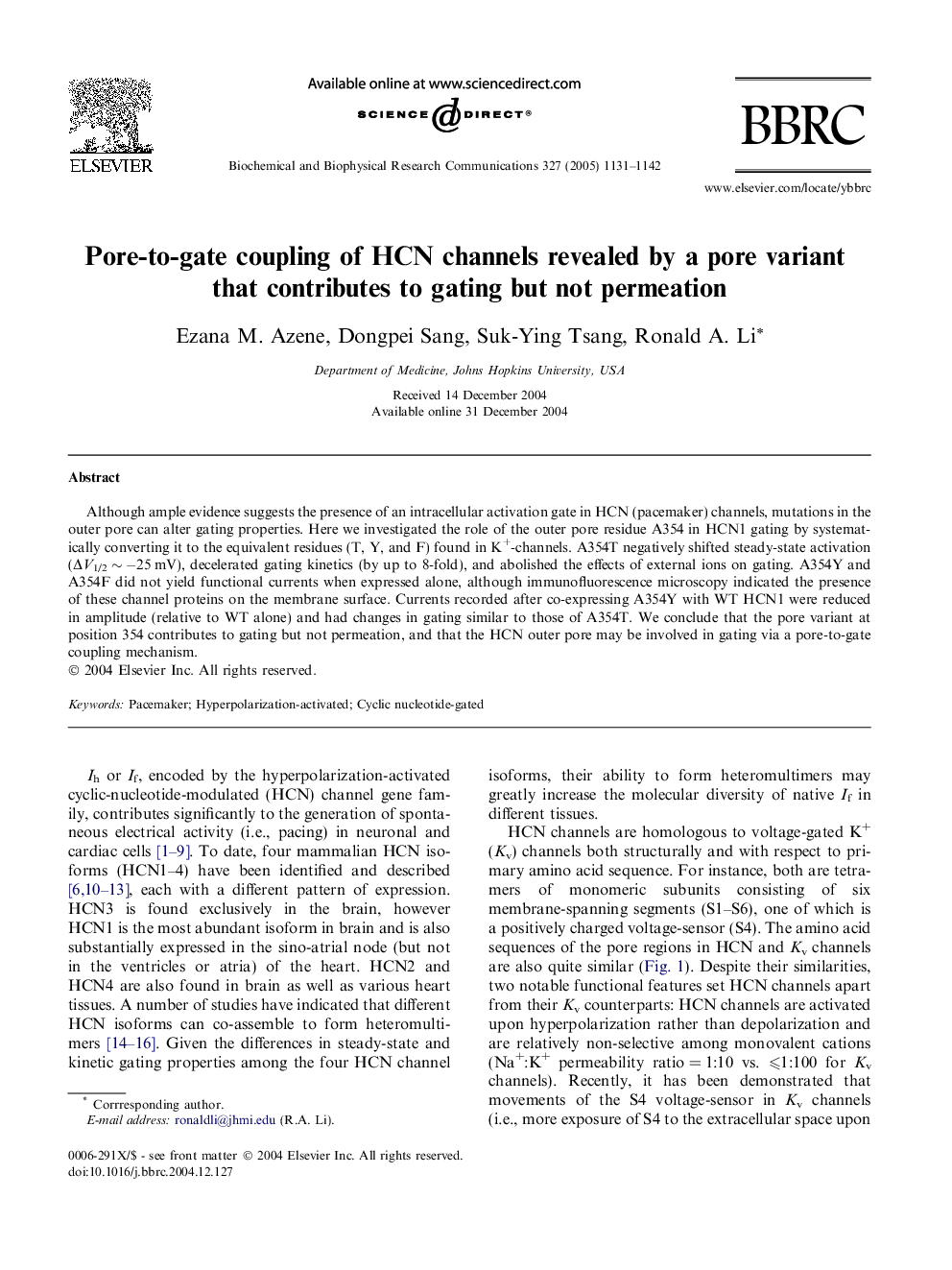| Article ID | Journal | Published Year | Pages | File Type |
|---|---|---|---|---|
| 10771294 | Biochemical and Biophysical Research Communications | 2005 | 12 Pages |
Abstract
Although ample evidence suggests the presence of an intracellular activation gate in HCN (pacemaker) channels, mutations in the outer pore can alter gating properties. Here we investigated the role of the outer pore residue A354 in HCN1 gating by systematically converting it to the equivalent residues (T, Y, and F) found in K+-channels. A354T negatively shifted steady-state activation (ÎV1/2 â¼Â â25 mV), decelerated gating kinetics (by up to 8-fold), and abolished the effects of external ions on gating. A354Y and A354F did not yield functional currents when expressed alone, although immunofluorescence microscopy indicated the presence of these channel proteins on the membrane surface. Currents recorded after co-expressing A354Y with WT HCN1 were reduced in amplitude (relative to WT alone) and had changes in gating similar to those of A354T. We conclude that the pore variant at position 354 contributes to gating but not permeation, and that the HCN outer pore may be involved in gating via a pore-to-gate coupling mechanism.
Related Topics
Life Sciences
Biochemistry, Genetics and Molecular Biology
Biochemistry
Authors
Ezana M. Azene, Dongpei Sang, Suk-Ying Tsang, Ronald A. Li,
